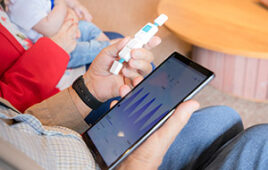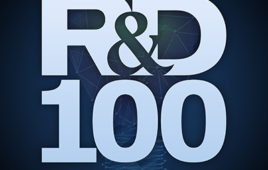The University of Rochester Medical Center and U.S. Food and Drug Administration (FDA) have developed an international effort to improve cardiac treatments through the creation of databases containing electrocardiographic (ECG) recordings from clinical trials. With the databases, researchers and health professionals are able to exchange tools, data and expertise for the improvement of cardiac care and safety.
The databases are housed by the Telemetric and Holter ECG Warehouse (THEW), a not-for-profit organization developed to advance the field of cardiac safety by distributing tools and information to academic and private organizations. The THEW is maintained by the University of Rochester Medical Center and Heart Research Follow-Up Program, in conjunction with a 2008 agreement with the U.S. Food and Drug Administration (FDA). Together, the collection of databases facilitates collaborative efforts and leverages resources for improving cardiac safety and medicine across the United States and Europe, including: Italy, France, Finland and the Czech Republic. Through the THEW, researchers, medical organizations and the FDA can now access millions of ECG tracings and health information from clinical and drug-safety trials in order to study the design and validation of analytic methods in cardiac research.
|
“The main goal of the initiative is to contribute information to research, where the Warehouse is used as a central repository for the exchange of professional expertise and technologies,” said Jean-Philippe Couderc, Ph.D., director of the THEW. “This initiative has successfully generated synergistic collaborations between groups of individuals from not-for-profits and professional companies in Europe and the U.S.”
Through information housed in the THEW, researchers are able to study the impact of drugs on the heart. One requirement includes examining the drug’s affect on the QT interval – the heart’s contraction and recovery time on ECG recordings – which can result in cardiac arrhythmias and possibly cardiac arrest. Using ECG recordings from cardiac patients and healthy volunteers who have worn heart-monitoring devices, THEW users can further study a drug’s impact on the QT interval from the variety of databases. A unique part of this repository, however, is that the THEW has data from directly induced cardiac arrhythmias, said Couderc. With the unique collection of ECG recordings in the THEW, researchers can help increase drug safety and learn how the heart reacts to a variety of treatments.
Heart disease is the most common cause of death in the United States and more than 95 percent of people who suffer from cardiac arrest never make it to the hospital, according to the American Heart Association. With such statistics, the FDA has placed great importance on enhancing cardiac care. Through the international collaboration of the THEW, health professionals are taking the first steps toward improving the cardiac health of the United States and abroad.
While the University of Rochester and various companies have provided the ECG database content, the THEW’s international collaborative efforts have been largely facilitated with supporting software provided by Global Instrumentation (GI), a medical technology company based in Manlius, N.Y. The THEW is hosted by a server at the University of Rochester, but the “Client Application” software supplied by GI enables users at various locations to interact with the databases over the Web. The Client Application includes a suite of data management, analysis and acquisition software modules for drug study applications. In other words, the GI software allows individuals to analyze database information with their own plug-ins – computer programs that interact with a host platform – to the main THEW software. As users employ personal plug-ins, their customized analytic methods are seamlessly integrated within the THEW platform. The flexibility enhances how researchers can find, analyze and utilize the Warehouse data. For example, users can employ a plug-in within the databases to retrieve the number of cardiac beats occurring during a specific time of day from a specific patient. Users then incorporate the specific information to discovering trends or studying different disciplines of electrocardiography.
“Our technologies and software provide researchers with a mechanism to analyze and compare a mixture of various ECG waveforms – from normal patients, patients with various “arrhythmias”, to patients that are taking various drugs,” said James DeMaso, president of Global Instrumentation. “Thus, users can examine different information from clinical trials and cardiac research on their computer using secure remote Internet access.”
Global Instrumentation also provided installation software for clients, servers and specialized software in order to import International Society for Holter and Noninvasive Electrocardiography (ISHNE) based ECG signal files and associated beat annotations into the THEW database. The ISHNE format has provided a universal system for exchange of ECG data. In addition, GI technologies support the backend of the database, including Web communications between it and the THEW client. The THEW client consists of various Global Instrumentation software components for rendering the ECG data, indexing records and user authentication.
“The THEW framework that we put in place is a perfect showcase in how we visualize the databases being used in an open architecture concept for clinical trials,” said DeMaso. “Most companies operate on a closed architecture, where researchers cannot customize the system for their unique application requirements and analyzing methods. However, this system allows a variety of tools and programs to be applied in processing ECG information.”
In addition to Global Instrumentation, AMPS, iCardiac Technologies, GE-Healthcare, Roche, Cardiocore, Philips Medical Systems, Schiller America, Mortara Instrument and Pfizer have also contributed to the development of the THEW.
Date: May 12, 2009
Source: Telemetric and Holter ECG Warehouse




